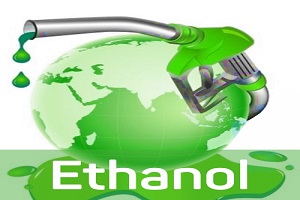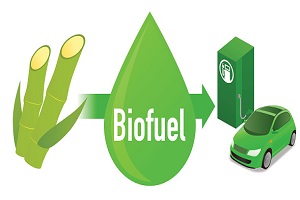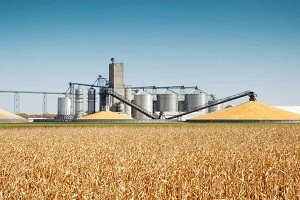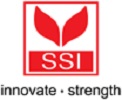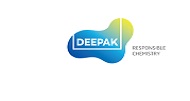Get a Project Report
Top Lucrative Business Ideas for Startups
GLOBAL ETHANOL INDUSTRY:
The worldwide ethanol market is expected to develop at a CAGR of 4.8 percent over the next five years. The increased use of the product as a biofuel is driving demand for the product. Another key aspect driving market expansion is the increased usage of alcoholic beverages. Both natural and petrochemical feedstocks can be used to make ethanol.
Natural sugars are fermented in the presence of yeast in the natural process. Because of the surge in shale gas output, ethylene production is expanding. As oil output declines and additional ethylene capacity comes online, the market is projected to become overstocked with ethylene, resulting in ethanol production stagnation. One of the primary market drivers is the use of ethanol as a biofuel.
The automotive industry has risen dramatically in recent years, posing numerous challenges in terms of air pollution control. To combat the problem of increased air pollution caused by automobiles, ethanol is combined with gasoline up to quantities of 10% and 15%. The use of ethanol gives significant benefits in terms of fuel economy, thermal efficiency, and cold start assistance throughout the winter season. In terms of the use of ethanol as a biofuel, the United States and Brazil are the world leaders. Alcoholic beverages containing ethanol, which were once considered a luxury item, are now gradually becoming a need in the majority of households around the world. The introduction of high-end products to the market is a primary driver of growth.
FUTURE OF GLOBAL ETHANOL MARKET:
The use of alcohol-based hand sanitizers has increased as a result of the current COVID-19 outbreak. Ethanol can be used as an active ingredient in hand sanitizers, according to the Food and Drug Administration’s guideline. As a result, the major players in the target sector are concentrating on growing ethanol production in order to gain a competitive advantage in the worldwide market. COVID-19 can also be treated with ethanol vapour inhalation, according to findings published by the National Institutes of Health (NIH) in September 2020. Ethanol plus aspirin, a combination medication, is in the third phase of clinical testing and has the potential to treat viral infections. This may have a positive impact on the ethanol industry’s growth.
INDIA ETHANOL MARKET
The ethanol industry in India is expected to expand at a 14.50 percent compound annual growth rate (CAGR). As a result of the growing usage of ethanol in applications such as gasoline additives and beverages. Ethanol is a popular alcoholic beverage that can be found in a variety of forms, including beer, cider, wine, spirits, and ale. The Indian government is attempting to minimise its reliance on imported crude oil by encouraging sugar producers in India to make ethanol for Oil Marketing Companies (OMCs). In order to fulfil the demand for its 20% Fuel Blending Program, ethanol output is likely to expand three to fivefold in the future (FBP). The demand for ethanol in the country is likely to be driven by factors such as rising alcohol consumption, changing lifestyles, and the expanding impact of western culture.
Industrial methylated spirits, which are made by mixing methanol with ethanol, are used as a solvent in the chemical industry and in household burners for heating and cooking. Sugar and molasses-based ethanol, second generation (mixed grains), and grain-based ethanol are the three types of ethanol produced in India. The government’s emphasis on biomass and solid waste ethanol generation is projected to become a key source of ethanol production in the future.
ETHANOL BLENDED PETROL PROGRAMME (EBP PROGRAMME)
Ethanol is an agro-based substance made mostly from molasses, a by-product of the sugar industry. When there is a glut of sugarcane and prices are low, the sugar business is unable to pay farmers their cane prices on time. The Ethanol Blending Program (EBP) aims to produce ethanol-motor spirit blends in order to reduce pollution, conserve foreign exchange, and boost value addition in the sugar business, allowing farmers to clear cane price arrears. The Department of Food and Public Distribution (DoFPD) has stated that it will provide financial assistance to project developers to help them expand their ethanol distillation capacity. The action is in keeping with the country’s goal of achieving 20% crude oil blending by 2025 and increasing ethanol production capacity.
Set up distilleries to manufacture 1st Generation (1G) ethanol from cereals (rice, wheat, barley, corn, and sorghum), sugarcane, and sugar beet would receive financial aid.
Conversion of molasses-based distilleries to dual feedstock distilleries will also be supported. Under the proposal, the government would cover interest for five years, including a one-year embargo on project proponents’ ability to borrow money from banks at a rate of 6% per year or 50% of interest, whichever is lower. The new programme is projected to attract investments of around $400 billion ($5.47 billion). In rural India, the potential investment in capacity expansion and new distilleries will result in a slew of new job possibilities. There are enough feedstocks available for ethanol production, and the government has set fair prices. Ethanol buyers have been secured for oil marketing businesses.
The scheme would make it easier for farmers to divert excess sugar to ethanol and encourage them to switch from sugarcane and rice to maize and corn, which require less water.
The government hopes that the scheme will lessen India’s reliance on crude oil imports. To promote the agricultural economy, reduce reliance on imported fossil fuels, save foreign cash on crude oil imports, and reduce air pollution, the government has set a goal of mixing 10% fuel-grade ethanol with petrol by 2022 and 20% by 2030. The government is also encouraging distilleries to expand fuel-grade ethanol production by using maize and rice available from the Food Corporation of India. Approximately 3.25 billion litres of ethanol are scheduled to be provided to oil firms in the current supply year (2020-21) to achieve 8.5 percent blending levels.
ETHANOL FEEDSTOCKS
An ethanol feedstock can be almost any plant-based resource. Sugars are found in all plants, and these sugars can be fermented to produce ethanol through a process known as “biochemical conversion.” In a technique known as “thermochemical conversion,” plant material can also be turned to ethanol using heat and chemicals.
Starch- and Sugar-Based Ethanol Feedstocks
Almost bulk of the ethanol produced today comes from starch and sugar-based feedstocks. These feedstocks include sugars that are simple to extract and ferment, making large-scale ethanol production feasible.
Cellulosic Ethanol Feedstocks
Crop residues, wood residues, dedicated energy crops, and industrial and other wastes are examples of cellulosic feedstocks. Cellulose, hemicellulose, and lignin make up these feedstocks.
TOP PLAYERS WORLDWIDE:
- India Glycols
- Bajaj Hindusthan Sugar
- Shree Renuka Sugars Ltd.
- Triveni Engineering & Industries Ltd.
- Balrampur Chini Mills Ltd.
- LanzaTech
- Dyadic International
- Fulcrum BioEnergy
- Codexis
- Johnson Matthey
- Opus 12
- Praj MATRIX
- POET

